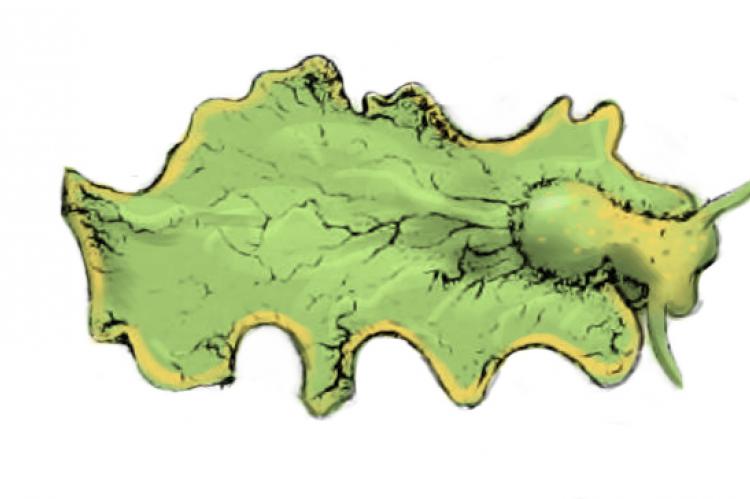Solar-powered Sea Slug
Elysia chlorotica is a green sea slug, with a gelatinous leaf-shaped body, that lives along the Atlantic seaboard of the US. What sets it apart from most other sea slugs is its ability to run on solar power.
Shaped like a leaf itself, the slug Elysia chlorotica can manufacture the most common form of chlorophyll, the green pigment in plants that captures energy from sunlight.
From Wikipedia - Elysia chlorotica, common name the eastern emerald elysia, is a small-to-medium-sized species of green sea slug, a marine opisthobranch gastropod mollusc. This sea slug superficially resembles a nudibranch, yet it does not belong to that suborder of gastropods. Instead it is a member of the closely-related suborder Sacoglossa.
The suborder Sacoglossa are known as the 'sap-sucking Opisthobranchias'. Many members of this group use chloroplasts from the algae they eat; a phenomenon known as kleptoplasty. Elysia chlorotica is one of the "solar-powered sea slugs", utilizing solar energy via chloroplasts from its algal food. It lives in a subcellular endosymbiotic relationship with chloroplasts of the marine heterokont alga Vaucheria litorea.
Some related slugs also engulf chloroplasts but E. chlorotica alone preserves the little green photosynthetic organelles called chloroplasts, from the algae it eats in working order for a whole slug lifetime of nearly a year. The slug readily sucks the innards out of algal filaments whenever they’re available, but in good light, multiple meals aren’t essential. The slug’s highly branched gut network engulfs these chloroplasts and holds them inside slug cells.
Scientists have shown that once a young slug has slurped its first chloroplast meal from one of its few favored species of Vaucheria algae, the slug does not have to eat again for the rest of its life. All it has to do is sunbathe.


